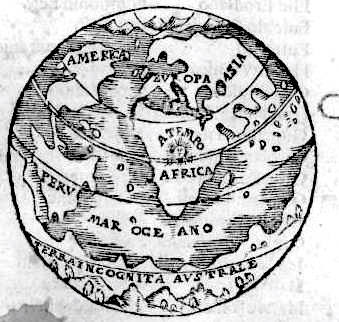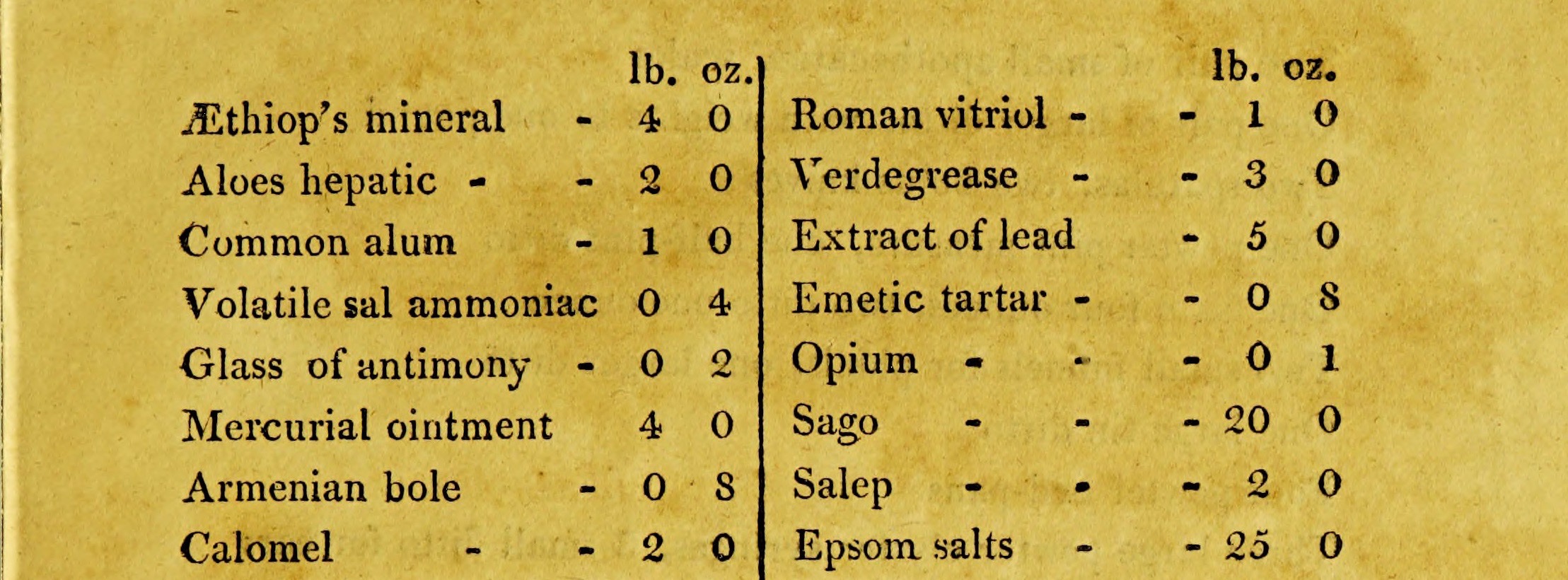In the early nineteenth century, a series of treaties and laws put an end to the international slave trade. With the cessation of the importation of new slaves came an increased interest in slave medicine, as plantation owners sought to maintain and eventually expand the number of enslaved workers they had available. Practical rules for the management and medical treatment of Negro slaves, in the sugar colonies anticipated this trend. Written by Dr. David Collins, a medical expert as well as a planter, the text contains a wide variety of descriptions of treatments, recipes for medicines, and other medical advice for the treatment of slaves.
The pages on display show a list of drugs and medical treatments that Dr. Collins recommended planters keep on hand at all times. Here we see a mix of European treatments (laudanum, mercury, James’s powder), treatments originally used by the Indigenous peoples of the Americas (Peruvian bark, powder of ipecacuanha), and new or more experimental concoctions (some of Collins’ “Compositions”). Indigenous or untried remedies were often tested and used on slaves before they were accepted into wider medical use.
Citation
A Professional Planter [= David Collins], Practical rules for the management and medical treatment of Negro slaves, in the sugar colonies. London : J. Barfield, 1803.[Catalogue Entry][archive.org]

